MedievalReporter.com
Covering history's most marvelous millennium
Join our newsletter!

Covering history's most marvelous millennium
Covering history's most marvelous millennium
Burgundy was a battleground state in the heart of Western Europe. The Burgundians migrated into the Roman Empire during Late Antiquity. After the Roman protection faded, the Franks incorporated Burgundy into their kingdom. As that state fell apart into a western and eastern part, the Burgundians were able to resurface right in the middle.
Caught in the crossfire between the two, Burgundy sometimes managed to play one side off against the other. This was a dangerous game, as the Burgundians were also annexed many times over. Nevertheless, during the Late Middle Ages, the Burgundian state was still a powerful political player with immense cultural prestige.
This is a short intro from our Medieval Guidebook. Dive deeper into the subject by reading our articles about it.
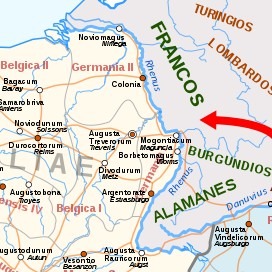
The Burgundians were Germanic people, possibly originating from Scandinavia. During Late Antiquity, the period preceding the Middle Ages, they migrated south. Around 400 CE, they appeared on the Middle Rhine. Back then, this was an important border of the Roman Empire. Imperial power was crumbling, however: the (Western) Roman Empire was in a state of collapse.
Other Germanic people, most notably the Goths, threatened the city of Rome itself. A major opportunity presented itself to the Burgundians when Roman soldiers were recalled to face this threat. With the Rhine border weakened, they crossed over. Before long, they established a kingdom that incorporated the current-day cities of Worms, Speyer and Strasbourg. However, the Romans survived the Gothic onslaught for now and quickly retaliated.
A Roman general hired Hunnic mercenaries to slaughter a lot of Burgundians. Severely weakened, the Romans then proceeded to settle them in the Savoy region in the Western Alps. Roman imperial authority continued to fade, however. Once more, the Burgundians started building a kingdom. It stretched south, almost to the Mediterranean, and had present-day Lyon as its capital.
With the Romans gone, it was here that the Burgundians came into conflict with both Goths and Franks.
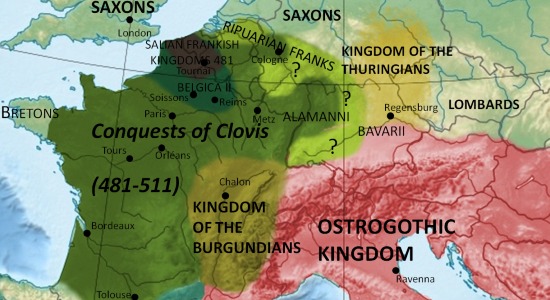
The Burgundians became sandwiched between the Ostrogoths in Italy and the Franks in Gallia or Gaul (roughly present-time France).
Trying to use one against the other, Burgundy sided with the Franks. Their alliance scored impressive results, weakening the Goths. This, however, greatly emboldened the Franks. War broke out between the allies with devastating consequences for the Burgundians. The Franks conquered them and incorporated them into the Frankish kingdom.
The Frankish Empire grew into the greatest Western European state of the Early Middle Ages. But during the 9th century, it started disintegrating. Its western half, called West Francia, gradually evolved into medieval France. East Francia grew into a major building block of the Holy Roman Empire. The Burgundians managed to capitalize on the chaos and resurfaced right in the middle between the “two Francias”.
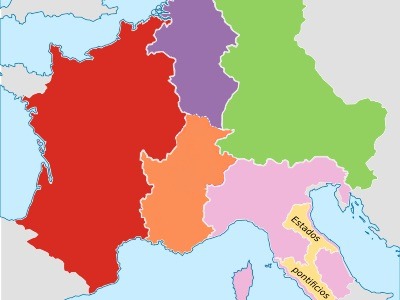
The opportunities that accompanied such a central location also proved to be a curse. Located on the crossroads of Europe, France and the Empire often sandwiched Burgundy - just like the Franks and Goths had done. Burgundy thus turned into a battleground. It was split in half. Its westernmost part became the Duchy of Burgundy, under the king of France. The other Burgundian lands combined into a kingdom that eventually “joined” the Holy Roman Empire.
In short, the Burgundians were neither French nor Frankish. They were a distinct Germanic people. Even though foreign kings and emperors ruled them for centuries, the Burgundians managed to return as a separate group time and time again.
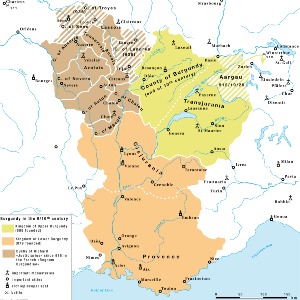
- advertisement -
- article continues below -
During the Late Middle Ages, the kingdoms of France and England engaged in a struggle that lasted over a century: the Hundred Years’ War. During a lull in the conflict, the French found out that their king had turned mad. He needed a regent and the dukes of both Burgundy and Orléans proposed themselves. Their competition turned into a French civil war, during which the English allied with the Burgundians.
The Hundred Years’ War flared up again. The Burgundians and English were very successful at first. Their victories enlarged their control over the territory of France enormously. In the end, the French resurged - partly thanks to the efforts of Jeanne d’Arc. The Burgundians were again forced to accept the king of France as their overlord.
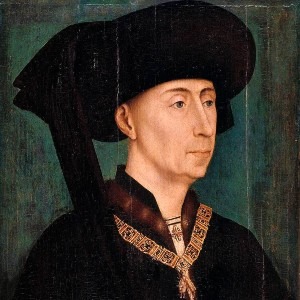
Burgundy had grown immensely wealthy during the war with France, though. Its dukes now sought new opportunities on another chessboard: the Holy Roman Empire. They inherited and simply bought a string of other states in the Empire: Flanders, Antwerp, Brabant, Holland, Luxembourg, and so on. The Burgundian court, in all its wealth and splendor, started dreaming of turning their state into a kingdom.
Before this came to pass, their duke died on the battlefield without sons. His daughter married the man who would later be crowned Holy Roman Emperor. France and the Empire squabbled over the consequences, both coveting the greatly enlarged Burgundian State. In the end, Burgundy reverted to its split state of affairs. The Duchy remained part of France, while its other lands stayed within the Holy Roman Empire.
During the Early Modern Era, many wars were fought to change this, but Burgundy would never resurface as an independent power.
Disclosure: we work hard to provide you with exclusive medieval reports and guides. To make the Middle Ages accessible to everybody, we’d like this information to remain FREE. Therefore, some of the links below are affiliate links, meaning – at no additional cost to you – we will earn a small compensation if you click through.
Grab a short intro on another civilization from our Medieval Guidebook.